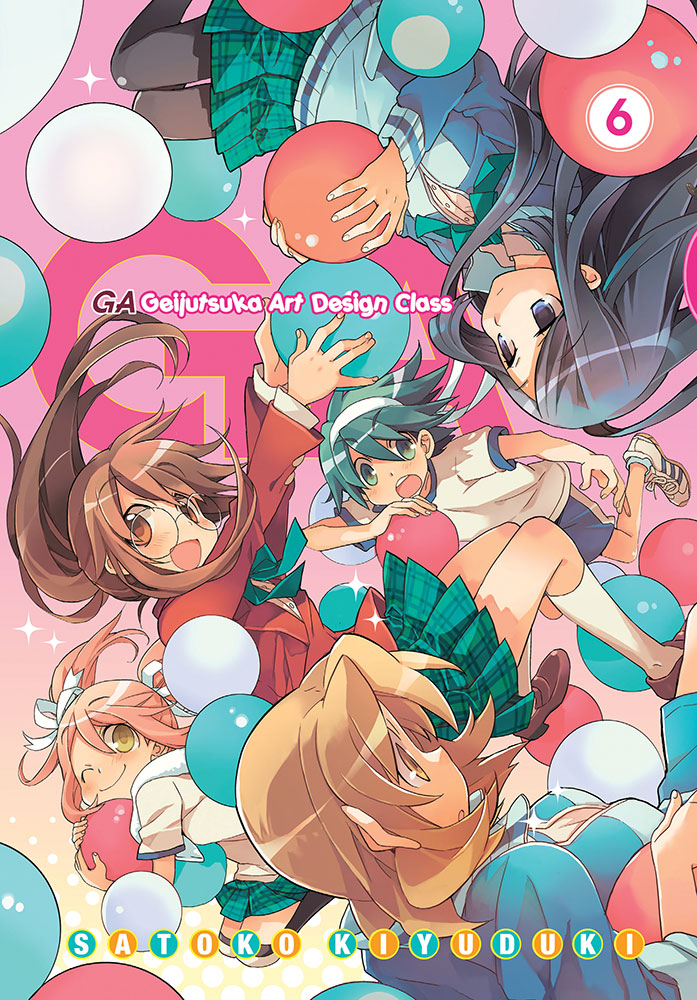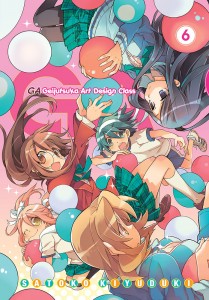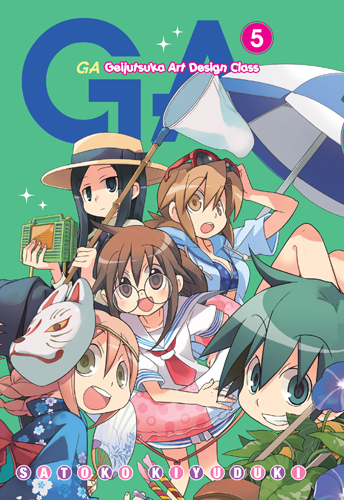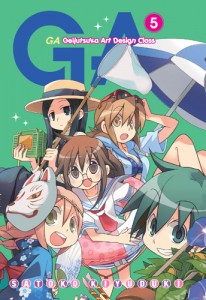By Satoko Kiyuduki. Released in Japan by Houbunsha, serialized in the magazine Manga Time Kirara Carat. Released in North America by Yen Press. Translated by Sheldon Drzka.
At last this 4-koma series devoted to both the study of art and the usual ensemble of cute girls has come to a close. You can tell it’s wrapping up by the final selection of color pages. In past volumes they’ve discussed color palettes or periods of art in history. Now we see how art can become a career, and how difficult it can be to make a living at it. Of course, our main cast are still first-years, so they won’t be graduating. But the secondary cast, including Awara and her best friend Mizubuchi, *are* graduating, and are beginning to realize that their future paths may not rely on them always being together as they have in the past. And what’s more, what’s to become of the Art Club?
There is, of course, still stuff to teach, as we learn with the girls about art patrons, and how being a designer means listening to your client as well as your muse. We get some backstory for Usami, the cute and insecure teacher, and we even manage to work in a love confession. (No, it wasn’t a yuri confession. Like manga Manga Time Kirara series, there is a level of yuri you can walk up to but not quite walk past.) Some are having trouble moving forward, like Miyabi, who has oodles of talent but whose future has been somewhat set in stone, so it’s difficult for her to fantasize. (This, naturally, leads to a dream sequence, which has been a common motif for GA volumes.) And some are wary of taking that big step, like Awara, who has an opportunity for a big art career move… but it means not going to college, something she finds rather difficult to confess, and we see why as it leads to a big fight.
Awara also has to decide what to do about the art club. She could give the club to the second years, but they’re clearly there to make up the numbers – none of them really understand WHY you would want to have an Art Club in a school that’s already devoted to art. Naturally, we do know one person whose love of art is strong enough that she would be the perfect successor. The scene where Kisaragi figures out what it is she wants to do going forward, and asks to join the art club, is one of the best in the whole series. And, because none of her friends would dream of letting her do this by herself (they all admit they’d be reluctant to join if it was any of the five of them EXCEPT her), they’re able to make up the numbers as well. We even get a look at the next generation, as the girl we saw during the last summer vacation seems to be on her way to becoming Kisaragi’s new kohai.
I know this series got a bit of flak over the years. It was too similar to Sunshine Sketch, or it prevented the artist from drawing the more critically acclaimed Shoulder-a-Coffin Kuro. But I felt its combination of art education, cuteness, and character moments was just right, and it always filled me with a warm, sunny feeling. I can’t recommend it enough.





